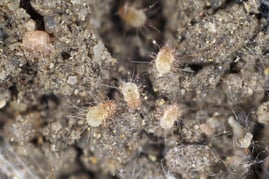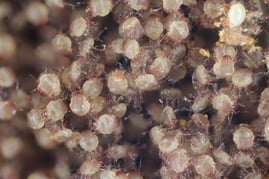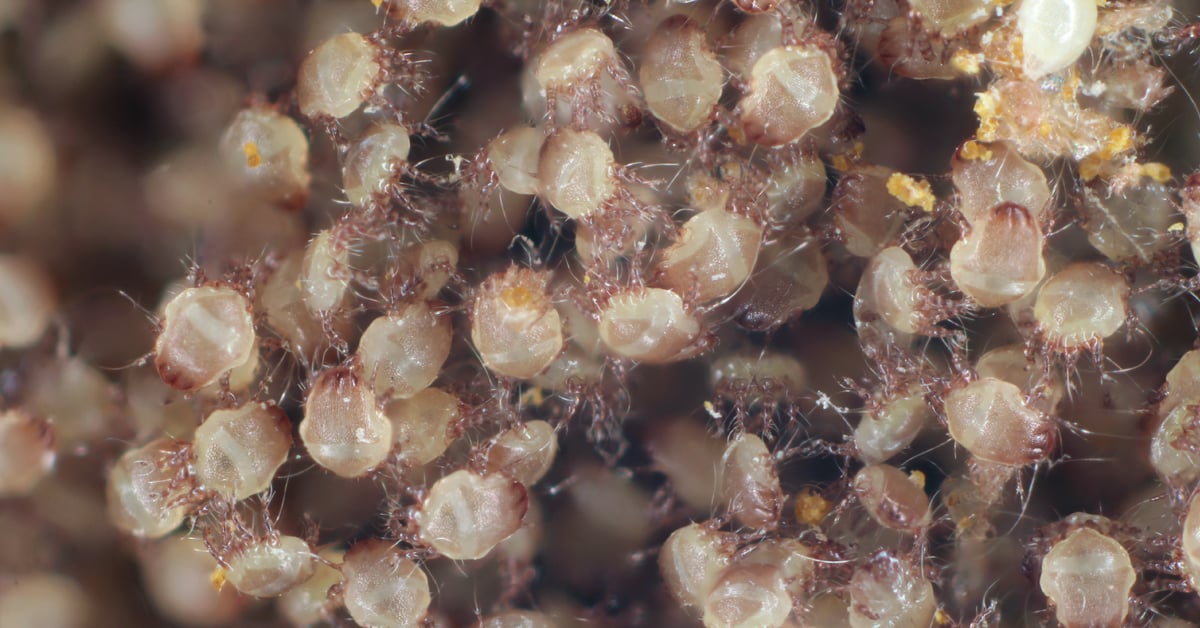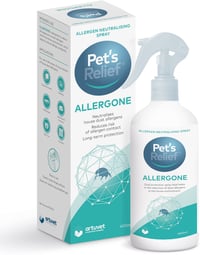Allergen levels in house dust mite allergy are at their highest between May and October, the peak breeding season of house dust mites. Most of the mites die during the winter, but the allergen-containing dust is stirred up by heating systems. This often causes the symptoms experienced by affected patients year-round to worsen during the winter.
Some facts about house dust mites
The most common house dust mites are Dermatophagoides pteronyssinus and Dermatophagoides farinae. They are brothers, although D. farinae is causing the most frequent sensitisation in animals. Animals are allergic to specific proteins of the droppings.


Dermatophagoides pteronyssinus and Dermatophagoides farinae
House dust mites are found in every home and are not a sign of poor hygiene. They prefer warm, damp, dark places. Mites thrive at a humidity of 70 to 80 per cent and temperatures above 25 degrees. They are not present in dry climate areas, even in dusty conditions. They need a damp environment to survive, since they take moisture from the air rather than drinking. They feed mainly on the dead skin shed from humans and animals. Their genus name ‘Dermatophagoides’ comes from the Greek, meaning ‘skin eaters’. In homes, they prefer bedrooms and the interiors and surfaces of mattresses, blankets and pillows. These places provide them with optimal living conditions.
Now there is a solution!
Allergen neutralising spray
Pet’s Relief® ALLERGONE spray changes the structure of house dust mite droppings (which is where animals are actually allergic to). As a result, the immune system of the animal does not recognise the proteins of these droppings anymore, preventing an allergic reaction.
Innovative solution for neutralisation of house dust allergens
Allergone ® reduces the exposure to house dust allergens, which helps to reduce the allergic symptoms. Allergone spray contains an aqueous suspension of microcapsules. The core of the microcapsules is filled with a mixture of substances affecting the chemical structure of allergen particles. Allergone forms a polymer film that glues dust allergens in larger particles stopping them floating in the air and allowing aggregated allergens to be removed easily with conventional cleaning.
Mite allergens are found in dust-filled textiles in the highest concentrations; these include upholstered furniture, carpets, curtains and plush toys as well as beds. Apply Allergone to these dust-filled textiles. and the innovative microcapsulation technology (Slow Release ™ Technology) will do its job. Allergone provides a long term protection again house dust mites of up to 5 months after a single application. The 400ml bottle is enough to spray a surface of approximately 40m².
 UK
UK

 Deutschland
Deutschland
 Global English
Global English
 France
France
 Nederland
Nederland




